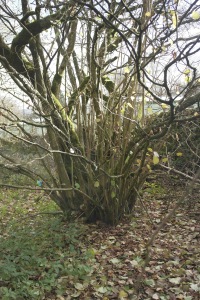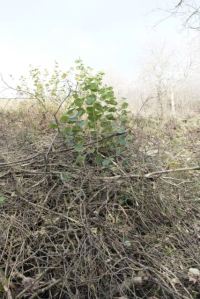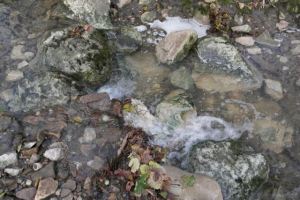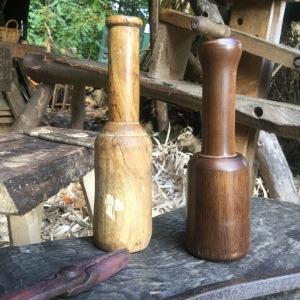When I was in Pennsylvania earlier this Summer we met our son Will and his wife Eva at Baldwin’s Bookbarn

Unbeknownst to me Will bought “Akenfield, a Portrait of an English Village” written by Ronald Blythe. It’s an interesting book about the changes taking place in life in a rural village in the 1960s. Will came over to the UK and stayed with us in July and we had a happy time visiting gardens, drinking beer and chatting.

I read the book after Will and enjoyed it, well worth a read.
Pass on a couple of months.
I’m sitting at my shave horse making pegs for the oak chest I’m making. Along comes a chap, interested in what I’m doing, we have a chat about an oak bench he’s made with an chain saw, a heavy outdoor bench. We get chatting about how he converted the log, the woodland where he sourced his oak, and it turns out he comes from Suffolk near Ipswich. Not just there but almost exactly where the book and film Akenfield were set. What’s coincidence.
So what else have I been up to this Summer?
Making the mural cupboard door, it’s just about ready to hang now, I’ve turned a little knob, thanks Peter F for the photos, and polished it with a medium oak wax to bring out the relief of the carving a bit. Got a second prize (out of four entries!) for it at the local agricultural show.
My brewing sacks of malt and bread making rye four need a home, so I’m making them an oaken one. I’m calling it a chest, but I guess it show really be an ark. I’ve scraped together left over riven stuff from previous jobs, but still have had to use some sawn through and through oak that’s been on hand for about 30 years, time it earned it’s keep. The stiles are sawn stuff, they are good 4 x 2s and very stable by now. I’ve spent some time working out what carving to do and I’m leaning towards just decorating the front panels, stile and top rail with carving. S-scrolls for the rail and stiles and a big floral piece for each of the panels, maybe two or three different ones, there are three front panels.
I’m just about decided on this version of the S-scroll:

This is a prototype, based on a chest which is at East Riddlesden Hall. It needs a little refinement but I particularly like the extra V-tool vein in the middle of the main S (which I’ll be joining up with the leaf veins) and the little ‘peas’ in the V of the leaves. I need to do some work on how the middle raised vein at the centre of the leaves will work too. The half-moon cutouts need to move away from the centre a little.
Here’s the original:

Copyright National Trust
The chest’s provenance is not from East Riddlesden as the hall was empty when taken on by the National Trust except for some amazing grain arks which you may have seen before:

Copyright National Trust

I need to check with the staff if they know whence the chest was sourced.
I’ve made a scratch stock for the lesser members based on the one Peter Folansbee uses in his Carved Chest DVD, a very useful resource. The scratch is a repurposed Silky saw blade, ground and filed to shape. There are a couple more details to the profile I’d not filed in at this point.

I’ve assembled together all the parts for the chest and started joining the rear frame first from a setting out of the front one. I’m waiting for a couple of the front boards to dry a little before I carve those prior to joining.
 Notice how the poles are bent and differing thicknesses when the stool has stood uncut for so long, there are some very old thick branches in there.
Notice how the poles are bent and differing thicknesses when the stool has stood uncut for so long, there are some very old thick branches in there.
 An hour later, all flat and partly graded into the various useful items from brash tops to cover the stool to avoid browsing by deer, to deer parts and fencing poles. This one still needs to final big, low cut right across the base to encourage new growth from basal buds.
An hour later, all flat and partly graded into the various useful items from brash tops to cover the stool to avoid browsing by deer, to deer parts and fencing poles. This one still needs to final big, low cut right across the base to encourage new growth from basal buds. This is the regrowth a couple of years after cutting.
This is the regrowth a couple of years after cutting.














You must be logged in to post a comment.